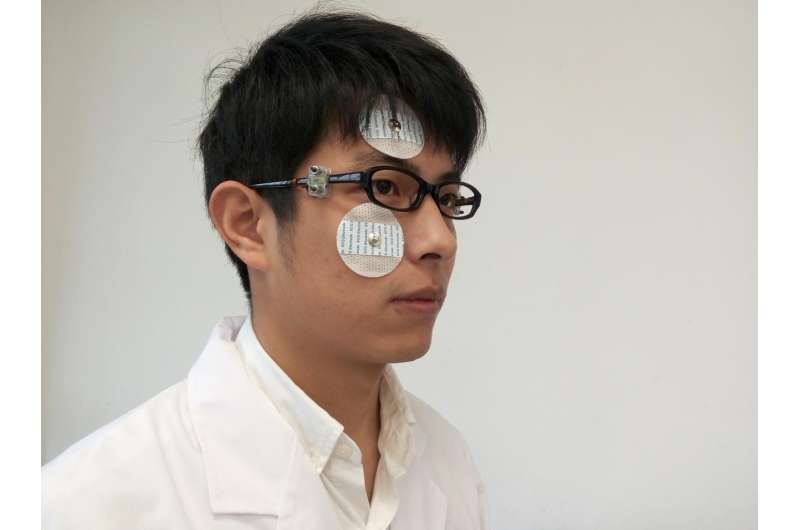A team of researchers from Chongqing University and the National Center for Nanoscience and Technology, both in China, has developed a sensor that is able to translate eye muscle movement into electrical signals that can be used to type or control an external device. In their paper published on the open access site Science Advances, the group describes the device, how it works and the ways they believe it can be used.
Over the past several years, scientists have sought to take advantage of the shrinking size of electronics to build tiny devices to help disabled people. In this new effort, the team sought a way to allow a person to type on a computer screen using only eye blinks. They report that they have designed a sensor that connects to a pair of eyeglasses and converts the movement of an eye muscle into an electric signal strong enough to allow for communication with external devices.
The sensor is based on a triboelectric nanogenerator (TENG), which is a device that generates an electrostatic charge in response to movement. In this case, the device is activated by a muscle located at the corner of the eye, which moves the eyelid when blinking occurs. The sensor is connected to a pair of eyeglass frames—when they user wears the glasses, the sensor comes into contact with the skin and senses blinks. When it does, it generates a tiny electrical charge that is sent to a device connected to a computer. The subject faces a computer screen and watches as a cursor moves over letters on the screen—when the desired letter is highlighted, the user blinks, selecting the letter. The process is repeated letter by letter to compose text. The sensor can also be used to control other devices—turning a lamp on and off, for example.
The researchers suggest their sensor device could be used by people with locked-in syndrome, for example, or ALS—any situation in which a person is unable to communicate in other ways.
More information: Xianjie Pu et al. Eye motion triggered self-powered mechnosensational communication system using triboelectric nanogenerator, Science Advances (2017). DOI: 10.1126/sciadv.1700694
Journal information: Science Advances
© 2017 Tech Xplore
























